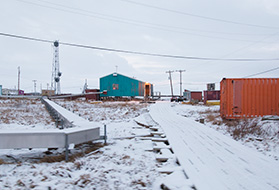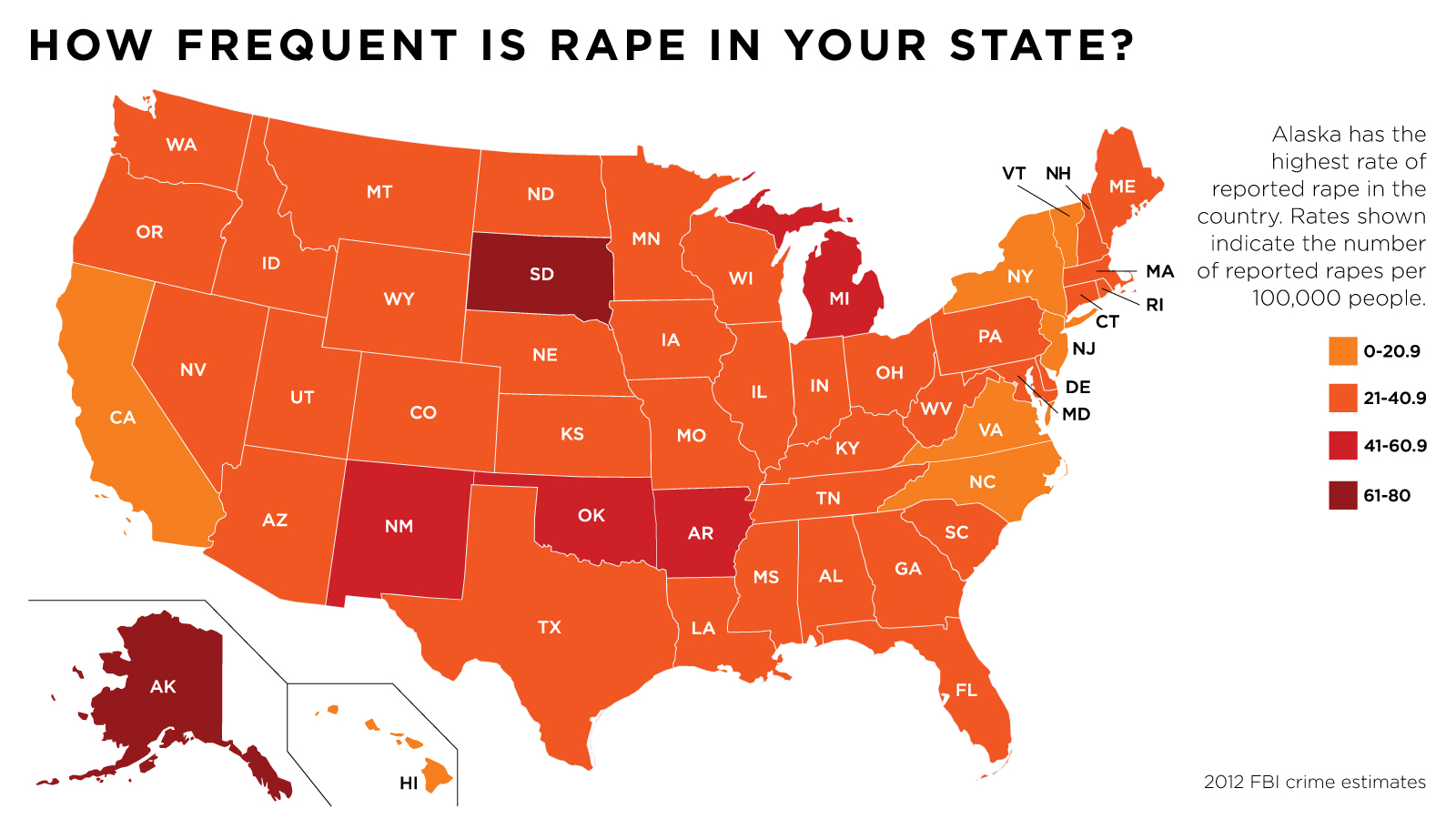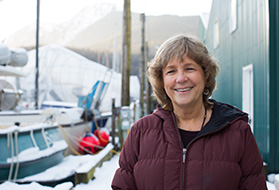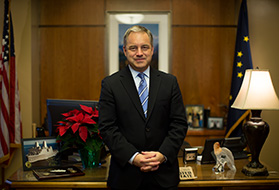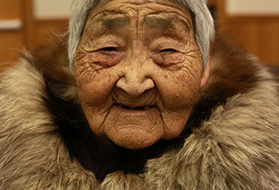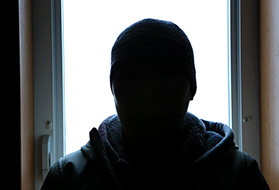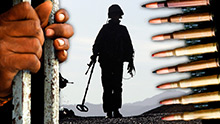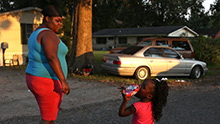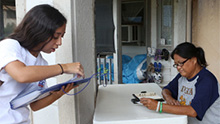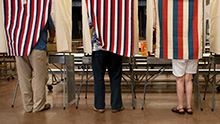The rapist next door

Alaska's rape rate is the highest in the country -- three times the national average. To find out why, I went to Alaska to talk with victims, politicians -- and the rapists. You voted for me to cover this topic as part of CNN's Change the List project.
By John D. Sutter
Videos and photography by Brandon Ancil
John D. Sutter is a columnist for CNN Opinion and head of CNN's Change the List project. Follow him on Twitter, Facebook or Google+. E-mail him at ctl@cnn.com
.Alaska (CNN)
Stand outside Ruth's wooden home here in Alaska and you'll hear only an occasional sound: A plane buzzes overhead, a reminder that the only way in or out of this village at this time of year is by air. Snowmobile tracks in her driveway, fossilized by the cold, creak and pop under your feet like brittle Styrofoam.
And the wind: The constant shhhhh as it rattles the tundra.
It sounds almost like a whisper.
Like this land is keeping secrets.
Next to Ruth's house is a shack: One room, wood stove, metal roof. Its plywood walls are so leaky that socks and towels are stuffed in the holes. In the shack lives Ruth's husband, Sheldon – love of her life, father to her many adopted children, a few of whom live with her next door. A clothesline, maybe 30 feet long, connects the homes. Ruth met Sheldon decades ago while ice fishing – was introduced by friends. He shared her love for the outdoors, her passion for camping all summer, soaking in 24 hours of sunlight afforded by the severe tilt of the Earth up here.
She loved him then. And she loves him now, she told me as we sat in her living room, wind chimes clanging outside on the porch. At least she thinks she does.
It's been harder lately -- since she learned what Sheldon was hiding.
Ruth told me her world nearly collapsed that day in 2003 when the police said her husband, over a course of years, had been raping and molesting Alice, one of her adopted daughters. Those unthinkable acts happened in her house, without her knowledge, she said.
But, amazingly, Ruth and Alice have opened their hearts again to Sheldon.
The mother and daughter have consented to ongoing contact with him, allowing him to live next door, for a powerful and counterintuitive reason:
They never want him to rape again.
'We can't answer that...'
I spent more than two weeks in America's "Last Frontier" state in December trying to answer two questions: Why is Alaska the national epicenter for rape?
And, more importantly, what can be done to change that?
Readers prompted this quest when they voted for me to cover rape and violence against women in the United States as part of CNN's Change the List project, which seeks to bring attention and support to bottom-of-the-list places like Alaska. This is the second of five topics readers commissioned as part of the series.
The extent of Alaska's problem with violence against women is both horrifying and clear: Alaska's per capita rate of reported rape is the highest in the country, according to 2012 FBI crime data. An estimated 80 rapes are reported in Alaska for every 100,000 people. That's nearly three times the national average of 27; and almost seven times the rate in New Jersey, the state where reported rape is least common. Those comparisons are imperfect, of course. But localized surveys in Alaska paint an even bleaker picture. A majority of women – 59% -- have experienced sexual or intimate partner violence, which includes physical violence and threats; and 37%, nearly four in 10, have been raped or sexually assaulted, according to a survey of 871 adult women in Alaska, published in 2010.
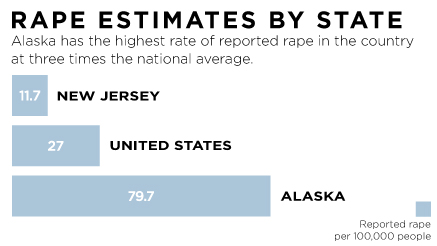
Source: FBI Uniform Crime Report, 2012
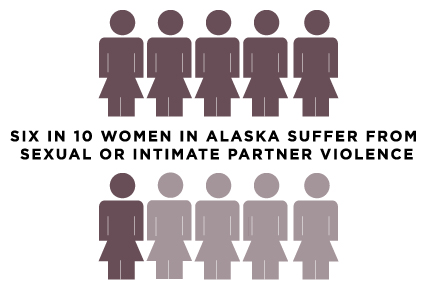
Source: Alaska Victimization Survey
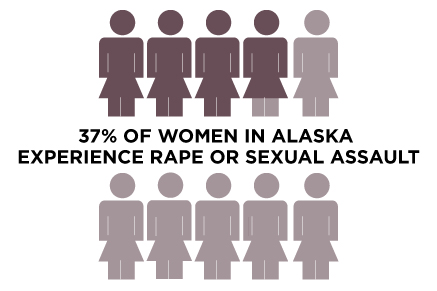
Source: Alaska Victimization Survey
There was a time when politicians in Alaska argued rape survivors were simply reporting rape more often in this state than elsewhere. Those arguments, however, have been largely abandoned as the scope of the violence has become clearer. If anything, the taboos surrounding rape here would suggest that the crime is underreported in Alaska, relative to other states.
What's unclear is exactly why the violence is occurring. "That's part of the problem," said Andre Rosay, director of the University of Alaska Anchorage Justice Center, and a national expert on this issue. "We can't answer that question. ..."
I asked Rosay what researchers had done to try to make sense of it. Had there been efforts to interview rapists? To understand what life experiences may have led them to rape? Or to try to figure out what might stop perpetrators from raping again?
No, he said. Not to his knowledge.
But, he offered: Maybe that would help.
That conversation and others like it led me to the small community where I met Sheldon – and to the decision to focus on offenders rather than victims. A common refrain from women's rights activists is that "rape won't stop until men stop raping."
I couldn't agree more. Victims aren't to blame; rapists are.
That's why I'm sharing the story of a rapist -- and a state -- trying to reform.
'There's no hiding'
I met Sheldon, the man who raped and molested his stepdaughter, in a cluttered conference room in the back of a metal building in rural Alaska. To protect the identity of Sheldon's victim, I've changed her name as well as those of her family members, including her rapist. I'm also not revealing the name or characteristics of their community.
On the wall in the conference room was a poster of the logo for an innovative sex-offender treatment program that Sheldon is enrolled in: The image shows six people holding hands in a circle around a masked face.
Above the logo is this phrase, translated from the local language:
"Sexual abuse ends when we begin to talk."
The program surrounds rapists and child molesters who already have served jail time with a network of at least five "safety nets" -- volunteers from the community who try to prevent the offenders from raping or molesting people again.
Sheldon is the person at the center.
His wife, Ruth, and several others are the safety net.
In this region, there are at least 300 of these volunteers.
The idea is based on two concepts dear to local indigenous culture: community and forgiveness. In many states, from California to Alabama, sex offenders essentially are banished from their homes after they're released from prison. Offenders are not allowed to live within a certain distance of schools, parks or child-care facilities – pushing them into places where they fly under the radar, unsupervised.
They often end up in homeless shelters, beneath overpasses and in rural environments where it's difficult to find work, support and counseling.
The goal here is exactly the opposite, said the clinical director of the local sex-offender treatment program, and who I'll call Robert.
Offenders are "right in the center" of a support circle, he said.
"There's no hiding here."
Sheldon entered the room, ready to talk, wearing a plaid shirt and camouflage-pattern pants. He's a friendly seeming guy with the face of a marionette – all eyebrows and cheekbones. Big smile, hard to read.
A man in his 60s, Sheldon moved back to this community in 2008 after being released from prison in another part of Alaska. His probation officer helped enroll him in the state-funded program, which was new at the time, Robert said.
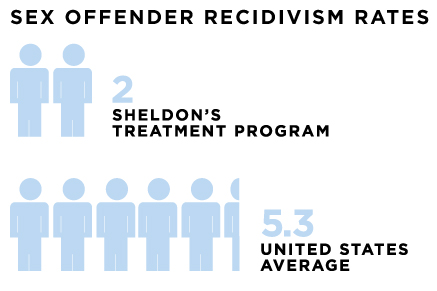
Source: Bureau of Justice Statistics, Alaska treatment program
Since it began, the treatment program here has served 90 sex offenders, with only two known cases of sexual re-offense, according to Robert. It's a tiny sample, so it's difficult to draw broad conclusions, but that's a recidivism rate of about 2%, which is "pretty darn good," to borrow Robert's words. One study of 9,691 sex offenders nationwide found 5.3% reoffended within three years.
Our first conversation began with Sheldon telling me he welcomes the fact that the members of his "safety net"-- his wife, a law-enforcement official, a religious mentor, a tribal elder and others – watch his every move. He also blamed himself alone for the trauma he caused his stepdaughter, who turned him in.
"I'm taking full responsibility. I'm sick and tired of holding it in here," he told me, later. "I just need to puke it out. Vomit it out."
Sheldon confessed to authorities in 2003, as well.
"Looking back is so disturbing for me,"he said. "It's frightening."
'Anger? Anger'
As a young boy, Sheldon learned the ways of traditional indigenous people: speaking the language, which is full of hard "k's" that pop in your throat and twisting "g's" that are nearly impossible for outsiders to pronounce; hunting for blubbery seal; foraging for salmonberries; and hooking fish out of holes cut in the ice.
No one calls him it today, but Sheldon's indigenous-language name roughly translates to "a person you can go to for help." It was passed down, as is customary in the culture, in honor of an aunt who died shortly before Sheldon was born.
It would be years before the irony of that name would sting.
Demons haunted Sheldon from childhood.
When he was 7 or 8, he told me, an older man took him into an abandoned building and made Sheldon unzip his pants. "He fondled my genitals," Sheldon said. "I backed off and ran away. He tried to coerce me to cooperate with him: Candy, pop. He asked me if I'd seen my mother naked in the house."
The abuse continued for years.
"At the time I was so confused,"Sheldon said. "Who am I? What is the expectation of this man? How am I supposed to respond to him? Confusion? Shame? Anger? Anger. Because he wouldn't listen to me when I told him to stop."
By the time he was 10, Sheldon decided to tell his parents.
It was an act of desperation, an enormous leap of faith.
Their response ended up haunting him as much as the abuse.
"Dad pulled my ears and hair and called me a liar," Sheldon told me. He "said I'd never change – would be a no good, mischievous boy ... I don't ever remember this man being arrested, reported. Sometimes it scares me. Maybe I was not the only one."
After being blamed by his father for the abuse, Sheldon made a vow: He would keep the abuse secret, deep inside his soul – and never let it surface.
"I've got to be a man," he thought. "And carry this with me alone."
'I could hurt them, too'
It's impossible, of course, to determine why a person becomes a rapist.
But I got some clues as I sat in a circle with about a dozen rapists and child molesters, along with three mental-health counselors, in the lobby of a local church.
The men, all clients of the sex-offender treatment program here, shook my hand and welcomed me to town. Are you used to this weather? How far are you from home? They wore ski bibs, hoodies and, in one case, a furry coat. I'd never have known these men were offenders had we met elsewhere.
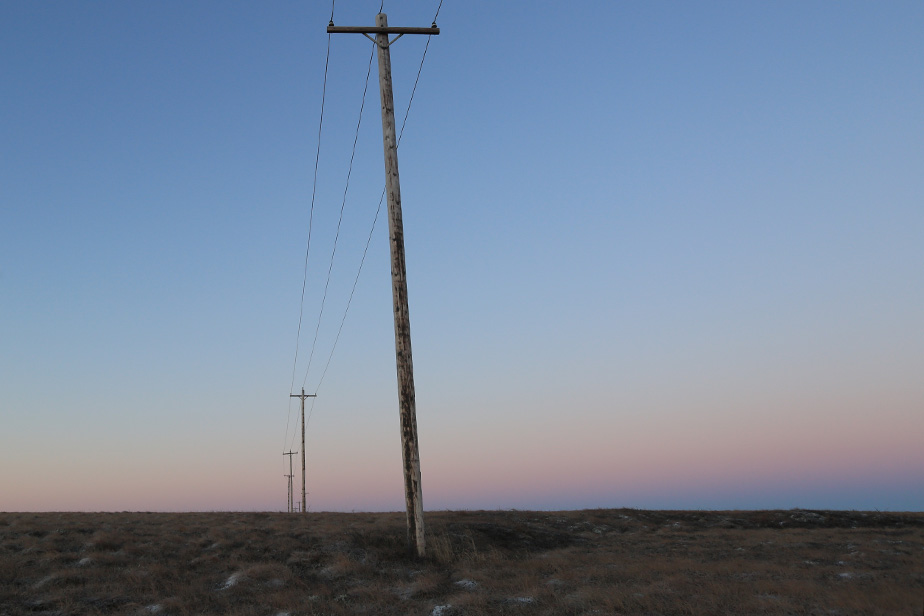
Isolation in Alaska contributes to the state's high rate of reported rape.
Sheldon was in the circle, holding a directional microphone hooked into a pair of headphones that look like they were purchased with a Walkman tape player. He pointed the microphone at the men in the circle so he could hear.
It's important he takes in every word.
Sheldon aimed the mic at the counselor from the treatment program here.
How many of you were sexually abused as children? the man asked.
It's a question that had been on my mind.
A little fewer than half of the men in the circle raised their hands. (Nationally, about 30% of sex offenders were abused as children, according to a 2001 study that's widely cited by state governments and activists.)
Later, Sheldon pointed the microphone at me, and the group allowed me to ask a question. I told them that I came to Alaska to try to understand why rates of rape and violence against women are so high here. And I said I figured maybe someone in this group might have answers. Could they help me understand?
One man who was sexually assaulted as a child told the group that he abused other people "so I could hurt them, too. So I wouldn't be alone."
Another said he kept his own sexual abuse hidden for nearly 60 years. "If I opened up back then, when I was young," he said, "I probably wouldn't be in this situation."
"My personal experience, what started it all," another said, "was feeling unloved."
Sheldon's story, as well, starts with the abuse he suffered as a boy.
The way his counselors describe it, he became intensely "sexualized" by those incidents (Sheldon says he was abused by a man and multiple women in his village as a boy) without understanding what that meant. That doesn't sound uncommon. I spoke with an Alaska state trooper who said authorities have responded to rape cases where the perpetrator is a boy of 7 or 8. It would be years before Sheldon would rape someone, but his patterns of abusive and inappropriate sexual behavior and touching began very young. Sheldon dived underwater in swimming holes so he could touch the genitals of his female classmates without their knowing what happened. He ran up to girls at school and fondled their breasts.
He was able to get away with it, he told me, because he lived in a remote village. Dozens of villages in Alaska have no law enforcement presence. Troopers must fly in by plane. Some victims of Sheldon's abusive touching tried to turn him in, he said, but they either weren't believed or no one thought to take action. Authorities were never involved. Either the acts were unspeakable, or worse: They were too common.
'What you've done'
Nearly every square inch in Ruth's living room is put to use: In the center of the floor is a trash can full of ice Sheldon harvested from a river, and which they use as drinking water after it melts; the kitchen table is a swap meet of dried salmon scraps, coffee mugs, a bowl of seal oil and a Crisco jar; triangular sticks of firewood are stacked in the corner near the wood-burning stove; seal-skin mittens, which Ruth sews, are on the coffee table; and, most eye-catchingly, family photos are everywhere -- papering the walls, even hanging from a rope.
Video: Visit Nunam Iqua, a remote village with no local law enforcement presence.
Above a bay window, which looks out toward the shack next door, there's a portrait of the entire family taken in 2001, before Sheldon went to prison.
Sheldon sports his characteristic slim mustache and Ruth wears saucer-sized eyeglasses, her salt-and-pepper hair parted in the middle, her son Samuel's hands on her shoulder. Sheldon is standing next to Alice, the young woman he raped -- after coaxing her with candy and telling her to be quiet, he told me.
Alice is smiling in the photo, and wearing a lime-green sweater.
She was always the pretty one. "We treated her like a little doll," Ruth told me, her voice beaming. "We were happy to have a little girl, and she's always dressed up really pretty." She was strong, too, Ruth said. Strong as any of her boys. And able to fish with the best of them. "We were so happy to have her," she said.
Behind the young woman's smile, though, were years of trauma.
The abuse "started off maybe when she was 6," Sheldon told me. "Touching her genitals outside her clothes. Pressing our genitals together. She was fighting that -- didn't want that ... All I heard was 'no,' but I kept at it. I remember I was mostly intoxicated at the house. She'd be sleeping in her bedroom and I'd sneak over there and touch her while she's sleeping, being careful not to wake her.
"Then if she stirred, I'd sneak off."
Alice realized what was happening.
"When I was getting molested, I was really scared to tell anybody," she said. "I tried to tell my mom, but she was too drunk to understand me. She was passed out. She was just grunting. If she would have known, she would have called the police right away."
Ruth, now sober, did not recall that incident.
Alice told me it was the only time she got up the courage to reach out for help. She was 9 at the time, she said. That's the age she recalls the sexual abuse beginning.
"I was too scared" to speak up again, she said. "I was scared everybody would blame me, or everybody would not believe me. I was scared they would get mad at me."
Ruth told me she blames herself for not knowing about the abuse. "I should've known," she said. The signs – depression, doing poorly in school – seem so clear in retrospect. If only her daughter felt like she could talk. Or if only she had heard.
In the silence, the abuse continued for seven years.
'EFFECTIVE. WORKS.'
Sheldon goes on long walks in the morning when the sun comes up, which is around 10:30 or 11 a.m. in December. The light peeks over the horizon and hovers there for a few hours, bringing no warmth (it was consistently 0 F, day and night, while I was in the area) but burning through the eyes of anyone who dares to look. The sun in wintertime Alaska reminded me of that painful part of an eye exam when the doctor puts the light right up to your pupil, hoping to see what's invisible.
Sheldon meditates and prays as he walks, asking God to heal him. Ruth, like the sun on the horizon, never takes her eyes off Sheldon. She calls and texts any time he's away, even briefly. Where is he now? Has he been around children?
She's a 24-hour police force.
And then there's the ammonia.
Sheldon carries a vial of that chemical with him everywhere he goes. He keeps a plastic jug of it on a shelf near his bed in the shack, near a picture of his family that he's stuck to the wall with electrical tape. These words are written on the side of the bottle in black, permanent marker: "STOP. EFFECTIVE. WORKS. USE."
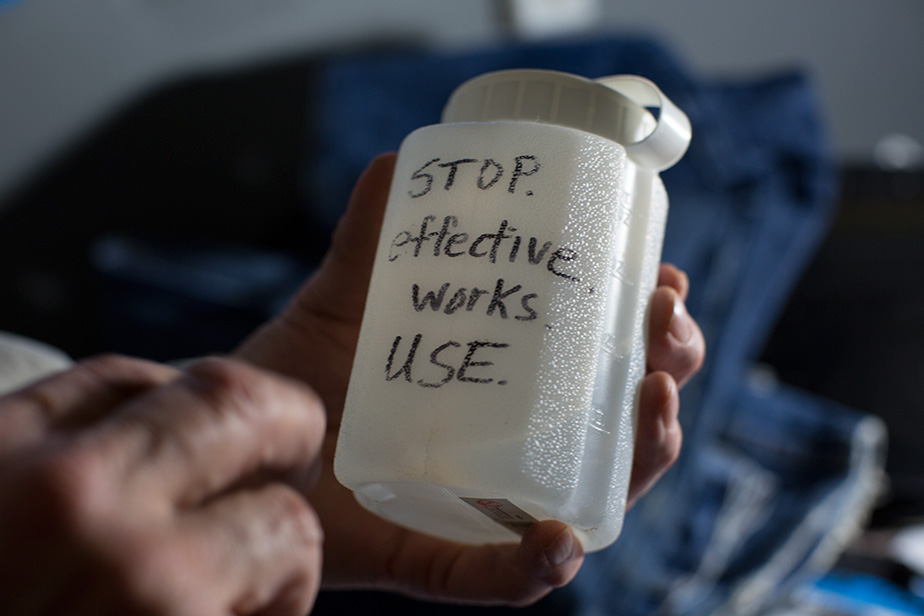
Sheldon sniffs ammonia when he gets inappropriate sexual urges.
If Sheldon gets an inappropriate sexual urge, he opens the vial and sniffs.
The chemicals jolt his brain back to reality, like "boom, your breathing stops," he said. "You can't breathe, your mind is going haywire."
His counselors prescribed it. For a time, he had to use it several times a day – every time a woman brushed his arm, every time he saw young girls.
"At first, I was practically using it all day – and at night," he said. "I would get up at night. I would get these very disturbing dreams."
Lately, it's been less frequent.
That's good news.
But every sniff of ammonia is a moment he could offend again.
'R-A-P-E'
Sheldon didn't know the word for "rape" in English until he'd already perpetrated that crime on his stepdaughter. When he learned the word and the meaning, he said, after hearing it used on an indigenous-language radio show, he started to panic.
He asked a priest about it.
"R-A-P-E."
The priest literally had to spell it out, he told me.
Internally, Sheldon wondered: Is that what I've done?
"The darkest moment that I felt was like this: I know it's wrong but it's something I wanted. I know it's wrong but I'm so excited. I'm all aroused.
"I can't stop myself."
His stepdaughter was 15 or 16, he said, the first time he raped her.
He raped her quietly, trying "to keep her calm."
"I was careful," he said. "If I raped her forcefully, she is going to yell and scream."
These details were painful for me to hear. I'm sure they're hard to read. I included them not to open old wounds for Alice and other victims of sexual assault, but to give you a sense of exactly how horrifying his crimes are. That so many women in Alaska have suffered similarly is almost unthinkable.
Think back to the statistics:
-- 37% raped or sexually assaulted
-- 59% victims of intimate partner and/or sexual violence
It's clear Ruth would like to reassemble her family the way it appeared in that portrait hanging over the bay window. Everyone together and smiling.
But she knows the truth: Smiles hid the horror, then and now.
Alice talked with me by phone only after I'd left Alaska. While I was in the community, she was drinking heavily and staying away, she told me. When we spoke, she sounded sober and of clear mind. I called her on her mother's phone and she told me she was staying at home again. Alice has had trouble with substance abuse since she was a young girl, she told me. Started smoking pot at 12 and drinking by 14. She did it "to forget what happened," she said, "but it was always still there."
She was in rehab for alcohol abuse as a teenager when, in an outburst that surprised even her, Alice told a counselor she had been molested by Sheldon. She never intended to tell anyone – not after the experience with her mom.
Life hasn't been easier for her since. She got married while Sheldon was in prison, but she had trouble being intimate with her husband because images of her childhood abuse flashed to mind. "There were some days I would feel uncomfortable having sex," she said. "He would ask what was wrong. I didn't tell him."
Several years ago, her only child, an infant son, died unexpectedly of an illness after suffering from a long and nagging cold, Alice told me.
"I imagine how tall my son would be. I just imagine he's going to school."
Then, less than two years later, her husband drowned in a river when their boat sank. She was on the boat, too, and she threw him a gas container in hopes he could use it to float to shore. "I heard him say, 'I can't swim anymore,'" she said.
It was around that time that Sheldon was released from prison.
When Alice's mom, Ruth, decided to let Sheldon back into their lives, she made sure he understood how much pain he had caused their family. She met Sheldon not at the airstrip but on their frozen driveway. As Sheldon recalls it, she pointed to the shed beside her home and told him that this is what he had done – that the torn-up building was a visual manifestation of the invisible wreckage inside them all.
Sheldon looked over at the shed: Broken windows, a door off its hinges.
A violent couple had rented it, Ruth told me, and destroyed it.
"I hope you see what you've done to us here," Sheldon recalls Ruth saying.
"And she left me there."
'There's hope'
I couldn't help being alarmed when Sheldon told me about the ammonia.
After spending several days with him, it became possible, in brief interludes, to stop thinking about the fact that he had raped his daughter. But certain moments -- like hearing about the ammonia -- would spring me back to a very frightening reality. This is a man who counselors say can never be trusted, not 100%; who does everything he can to seem like he's on the right track; who, his therapist told me, had sex with a dead and frozen seal once because he was so aroused.
"I know (Sheldon) is changing," Ruth told me.
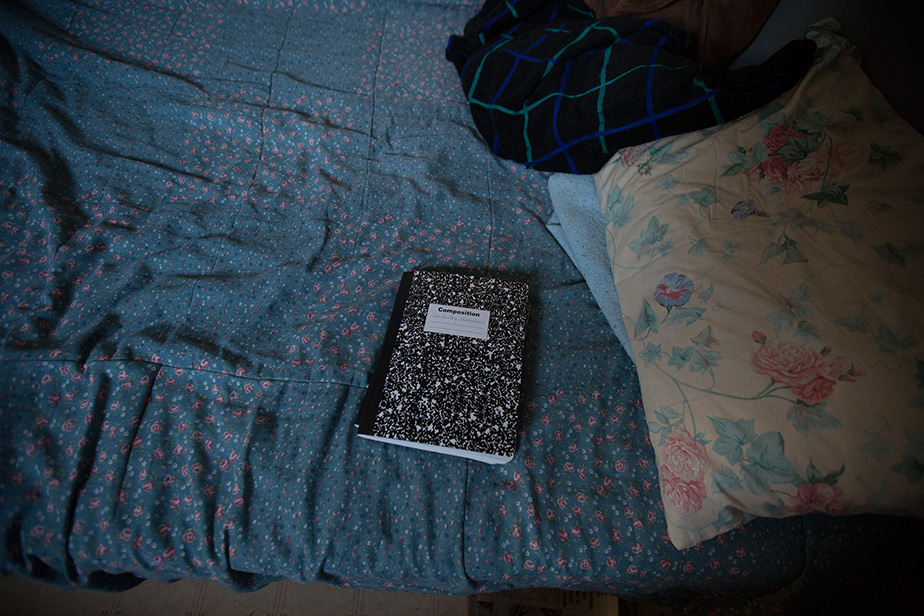
Counselors ask Sheldon to keep a journal about his progress and sexual thoughts.
Still, she worries.
And how could a person blame her?
Sheldon's struggle makes Ruth and Alice's acceptance of him – and this community's – all the more powerful. I went to church with Sheldon, accompanied him to the post office, met the family's priest, saw Sheldon read and watch TV with the couple's young son. In none of these interactions did people seem to treat him differently. If anything, he seems to be a caring and loving father to the young boy.
The intellectual part of me understands this is best for everyone involved.
But it's hard not to retch at what he's done. How can you forget?
Ruth and Alice wrestle with these questions, too.
The terms of Sheldon's probation initially banned him from having any contact with his daughter, according to court documents. Alice, now in her mid-20s, has allowed Sheldon to live next door to her mother and to be in her presence while he is in recovery, said Robert, the clinical social worker from the program. That wouldn't have been legal without her consent, he said. Sheldon is not allowed to be in the presence of minor females without supervision, according to the terms of his probation.
Ruth is quick to police these points. That's one reason she wants Sheldon to live next door in the shack, instead of where he can't be watched.
Alice told me she approved the arrangement.
"I'm completely fine with him being around – just as long as my mom's around or somebody's around with us," Alice told me. "I feel safe as long as he's not sleeping under the same roof ... I believe he can change. If he could believe in me to succeed in school, I believe he could change. I know that changing is possible.
"I can't tell you the future or anything," she said, "but there's hope."
I asked if she had forgiven Sheldon.
To my surprise, she said she has.
"We were taught: forgive and forget," Alice said, "but I can't forget, and I won't forget ... I can forgive him but I won't forget ... It's a scar for life."
Her mother wants to forgive him but can't, not yet. She's considered leaving her husband. I'm sure that's what many readers would expect – or demand – her to do.
But she thinks about it rationally, practically.
She knows many sex offenders end up homeless.
She knows, too, that, without her, Sheldon would be more likely to reoffend.
She considers this her unwanted calling. Ruth comes from a highly religious family. She's a stout believer in forgiveness and redemption -- a person who used to take a large number of foster kids into her home, because she wanted to help them. She walks around town and many of these children call her "Mom." She knows – believes, with all her soul -- Sheldon can change. And Alaska can, too.
It can, right?
Sometimes she has to wonder.
'All of the secrets'
Before I visited Alaska, it was difficult for me to comprehend how stunningly common rape is in this state. As an outsider, when I heard about Sheldon's situation – a rapist living next door – I was flabbergasted.
That kind of situation isn't unheard of here.
It would be possible in any number of communities, activists told me.
There are so many perpetrators, so many victims. Communities in Alaska are small enough there's little choice but for lives to intersect again.
That was true enough in a 200-person Yupik village I visited, out by the mouth of the Yukon River. Nearly every woman in Nunam Iqua has been the victim of domestic abuse or sexual assault, according to several women there, a nearby women's shelter director, and the village's mayor. Nunam Iqua means "end of the land" in Yupik. It has no local law enforcement. When rape or other violence occurs, state troopers must fly into the village from other towns – a process that sometimes takes days, depending on the weather. A local husband and wife run a secret "safe house" for victims of sexual and intimate partner violence. To get formal help, however, victims would have to fly to a nearby town.
Abuse becomes normal in such an environment.
The PBS series "Frontline" visited one village where Catholic workers were alleged to have sexually abused nearly an entire generation of Alaska Native children in a rural part of the state.
There are decades of sordid history that need to be unpacked.
Many people here talk about the "multigenerational trauma" that has been inflicted on Alaska Native people, who are thought to have among the highest rates of rape and other violence. Entire generations were subjected to abuse as well as disease.
It's still within cultural memory, for example, that white missionaries and settlers brought flu that wiped out entire villages of Alaska Native people in 1918. "Suffering from influenza, many Eskimos and Native Americans found themselves unable to harvest moose or feed their traps and, in the wake of the pandemic, many people died of starvation," the U.S. Department of Health and Human Services says on a page devoted to the flu. "In some areas, the situation was especially acute as Eskimos did the unthinkable and ate their sled dogs. In other villages, hungry sled dogs turned on the dead and dying and ate them to survive."
Decades ago, children were punished harshly, beaten even, if they spoke their native language. Sheldon witnessed this as a child. And, like many others, he went away to boarding schools for indigenous people in Oklahoma and Kansas – foreign lands where he was disconnected from his roots. "It was totally a culture shock for me," he said.
Most of these traumas remain unspeakable today in rural Alaska. It's as if generations of elders have dealt with the past by silencing it. Experts tell me this is one of the reasons rape has been allowed to flourish. Generations of people are wandering the tundra lost – unemployed, drunk, angry, suicidal and violent.
"All of the secrets and the harm – the sexual violence – came after contact" between Alaska Natives and white settlers, said Joan Dewey, mental health clinician who works with sex offenders and has been trying to understand rape in the state.
None of this is an excuse for violence. There is none. But it does go a long way toward explaining why Alaska has the highest rape rate in America.
It would be a mistake to see rape as an isolated problem.
It and so many other social ills grow from the same root.
The social fabric of Alaska has been torn.
'I didn't feel human at all'
Of all the unique aspects of Sheldon's treatment program – the ammonia, the therapy sessions, the idea that sex offenders should be kept close, not pushed away – the most powerful to me is this: victims are among the volunteers.
I met a woman -- I'll call her Claire -- who was sexually abused by her brother as a young girl in a remote village, and who was raped by a taxi driver as an adult in Anchorage. After all of that, her daughter, a product of that rape, was sexually abused by her nephew after Claire gave the girl up for adoption.
I'm not using Claire's real name or image in an effort to further protect the identity of Sheldon's victim. She was willing to speak openly, with her image and name. The soft-spoken 42-year-old with porcelain features and a beaming smile is convinced that, in order for Alaska to stop sexual violence, victims of rape need to speak up.
And perpetrators need to be given the opportunity to change.
Those beliefs come not in spite of but because of her personal experience.
Claire's brother started abusing her when she was 9 – coming into her room late at night and pressing his genitals up against her, with their sister in the room.
"The next day I tried to tell my mom," she said. "I don't know if they were in denial, or if they didn't want to face it. I don't know ... I just stopped telling my parents" after they didn't do anything to stop her brother from abusing her.
"It was like, do I exist?" she said. "Do I even have a voice?
"Can't anyone hear me crying?"
It seems no one cared to hear. Claire was left to try to protect herself. She climbed in bed with her sister, who promptly pushed her out. She wore layers of cold-weather clothing -- piled blankets on top of that, hoping to deter him, or slow him down at the very least. She still hates the month of October because that's when the abuse always escalated, as Alaska's nights grew longer, stealing the day.
At 16, Claire told a teacher – turned him in. But the community blamed her, and her family disowned the high-school girl. She has to wonder, now, if it's because she was female and he was male. She didn't work and he hunted and fished – provided not just for her family but also for the entire Alaska Native village.
He was seen as valuable; she was not.
She ended up in foster care, part of the time in Anchorage, the city where she later would be raped.
People in this state have done everything they could to break Claire's spirit.
But it hasn't worked.
Two years after the rape in Anchorage, which she said she did not report because she was afraid she would be blamed, just as she was at home, Claire had a son from a consensual relationship. She decided to seek help – to find a group of women in her community who she could talk to about all of the shame and grief she carried.
"The perpetrator makes you feel so ashamed – like it's all my fault," she said. "It's what I wore. I don't deserve to feel love. I don't deserve to feel happy. There's a lot of things that my mind said ... I felt so dirty, so unclean.
"I felt worthless. I didn't feel human at all.
"I felt like I was just a thing."
Talking about it helped Claire realize that she was not to blame.
The shame was theirs, not hers.
She decided she wanted a different life for her infant son – didn't want him to be "born under the shadow of my ancestors' trauma," she said, as she was.
Now she is working with Sheldon's sex-offender treatment program. She's a "safety net" member, helping the nephew who sexually abused her own daughter. She believes he – and other sex offenders in Alaska – can change.
It's with Mandela-esque compassion that she says the state is failing them -- that communities must be rebuilt so they're safe for everyone.
So they don't encourage violence.
She thinks back to something an elder told her ages ago.
"He used to say, 'Our people are sleeping,'" she told me. "'They're in a daze. They don't know what they're doing. So, the people who are ready, they need to prepare them a big feast. Prepare them their meals, because they're starting to wake up.'"
I asked Claire if she had any advice for Alice, Sheldon's victim.
Her answer was quick: Talk about it.
"You need to stop carrying the shame," she said, knowing that's easier said than done. "We need to stop wearing the masks that (the rapists) put on us."
'I told him to stop'
Sheldon's family has been settling into a new normal of sorts. Each day is difficult. Sheldon and Ruth don't talk like they used to. He spends his days doing chores – chopping wood, repairing her house – while she works temp jobs. Alice is living at home for now, but she's been in and out in recent weeks.
They live partly off Sheldon's pension from the Alaska Army Reserves, where he served for more than two decades. Their son, Samuel, chips in financially, too.
But Ruth owns both of their homes, their car and their snowmobile. Her income, from office jobs as well as selling indigenous art and clothing, makes it work. Some women feel trapped and stay with abusive husbands because they are financially dependent; it would be impossible to say that of Ruth.
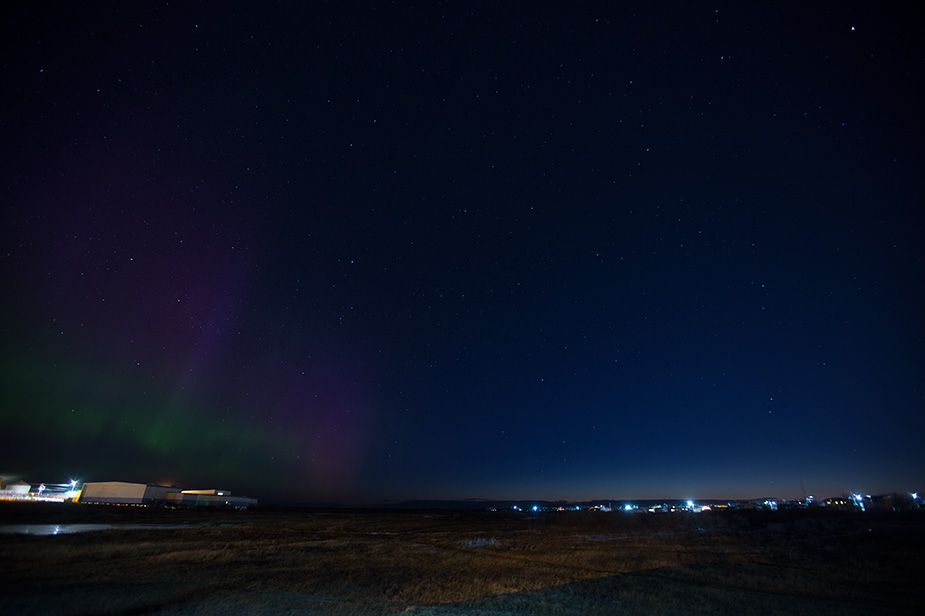
One victim of rape and sexual abuse said she fears Alaska's long, dark winters because that's when the abuse became more frequent.
Sheldon tries to give back however he can. It's clear to me he wants to redeem himself, and is pained to see his stepdaughter struggling. He volunteers with search-and-rescue teams – helps translate the local language for sex-offender counselors. Walk around town with him and people smile and greet him like any other person.
It's almost surreal how much has changed.
"He hasn't re-offended, to our knowledge," said Sheldon's counselor, "and I think the polygraph would show us if he had."
But the work is never ending.
Sheldon's counselor has reservations about him living so close to his daughter. He wants him to be integrated into the family and community – it's safer that way.
But it's hard to know how close is too close.
Whether it's possible to reform rapists and sex offenders is perhaps the most controversial topic in advocacy and policy circles at the moment, said Scott Berkowitz, founder and president of the Rape, Abuse & Incest National Network (RAINN), a leading advocacy group. Still, he shares my view that "we've got to keep trying," he told me, "even if it only is working 10% of the time."
It's easy to see why when you spend time with Sheldon and his family.
Alice has been quicker to forgive Sheldon than Ruth because Sheldon admitted what he had done -- and that was a life-changing thing for her, she told me. When her abuser came back from jail, he told her that she was not to blame.
"It just made another block come off my shoulders," Alice said.
Samuel, one of Sheldon and Ruth's sons, had a similar experience. I met the 20-something in his room in the back of Ruth's house one afternoon. A curtain covers his door and I had to climb over clutter to reach the room. I had planned to ask Samuel about his dad's recovery, how his sister was doing, and how he felt about having a father who raped a family member. Was it safe? Did he know about the abuse? It is safe, he said, and no, he's not afraid of Sheldon.
Samuel told me he also was a victim of rape, too, by a stranger, not by Sheldon
"I told him to stop and get off" of me, Samuel told me. "He wouldn't."
The rape happened behind an abandoned building when he was 15, Samuel told me. Samuel, who is gay, has flashbacks to the rape whenever he gets close to someone now – especially if they're about to become intimate. He worries he will be raped again. That fear, and the flashbacks, have led to depression, shame and failed relationships and some trouble with substance abuse and the law.
The one bright spot in it all, he said, is what his dad told him.
"'It's not your fault, (Samuel),'" he recalls Sheldon saying. "'It's not your fault.'"
He raped you. Only he is to blame.
If anyone can say that, it would be a rapist.
'Resident evil'
After talking with dozens of people in Alaska, here are the best theories I heard about why the state has the highest rape rate in the country:
- The history of cultural trauma, abuse, disease and dislocation imposed on Alaska Native villages has led to a cycle of despair and violent behavior.
- Rape is tolerated in some communities; when victims like Claire come forward, they're not believed or told to forget what happened.
- Offenders are too rarely punished. Of nearly 1,000 cases of sexual assault studied by the University of Alaska Anchorage Justice Center, 46% were referred for prosecution and 22% resulted in a conviction. It's difficult to compare those rates with other states, said Andre Rosay, from the justice center. What's clear, he said, is that "the biggest hurdle really is in getting the case referred for prosecution, "especially in villages with no local law enforcement presence. Sexual assault cases are 3 ½ times as likely to be prosecuted in communities with a Village Public Safety Officer, he said.
- The state is so large – four times the size of California – and so sparsely populated, that it's nearly impossible to police. State troopers must fly to many remote villages, and that can take days, depending on the weather.
- Long winters make it easy for offenders to perpetrate the crime.
- There's a high rate of alcohol abuse, which doesn't cause rape, but can lower inhibitions for would-be offenders and can be used as a date-rape drug.
If I placed a bet, it would be on a seventh reason: the silence.
It permeates every aspect of life in Alaska.
And it changes how the state must deal with rape and sex abuse.
Policy shifts are important, to be sure. The state should broaden the power of tribal courts; expand law-enforcement in rural Alaska; increase the number of women's shelters, so fewer victims will have to hop a plane to find safety; and expand sex-offender treatment programs like the one in which Sheldon participates.
But, for those to take hold, people have to start talking.
Some are pushing the conversation, and have been for years.
As I traveled the state, I met Elsie Nanugaq Tommy -- 104 and all smiles inside a fur-trimmed, hooded coat -- who started a secret safe house for abused women in Newtok, Alaska, decades ago. Her extraordinary work – and her willingness to address issues others wanted to ignore – inspired her granddaughter, Denise Tommy, who is now the director of the Tundra Women's Coalition. That organization runs rape-prevention programs and a shelter for abused women. It pays to fly victims to the shelter from neighboring villages.
In Juneau, I met Alaska's governor, Sean Parnell. He has none of Sarah Palin's name recognition (the local press calls him the Oatmeal Governor because they think he's bland), but he's making important strides in terms of raising awareness about sexual violence. In an interview, he called rape a state "epidemic," and Alaska's "resident evil." "That's been the hardest part about the evil among us: We haven't been willing to talk about it," the governor told me.
"I'm also sending a message as a man to women who have endured this shame that they are not to blame," he said. "They do not need to carry the guilt and shame – and we are willing to embrace and love them unconditionally."
If you want to help, I'd encourage you to donate to CNN-vetted organizations that are working to end violence against women in Alaska.
Or join our online storytelling project: "We are the 59%." We're asking people to show their solidarity for the survivors, or to share their own stories of survival.
'Treatment is never over'
Journalists like to classify things – success or failure; good or bad. So it should be no surprise that I asked Sheldon's counselor if he considered him a "success story."
No sex offender is a success story, Robert told me. The harm caused to a victim of rape or sexual abuse can never be repaired. And there's always the chance of re-offense. "Treatment is never over for them," the clinical social worker said. "We equate it with diabetes – a physical disability. It's something you're going to have to manage the rest of your life." But Sheldon's, he said, is an encouraging case.
And he wouldn't be in this line of work if he didn't believe people could change.
It's impossible to trust Sheldon – not 100%. But I am rooting for him. I know he has the potential to grow into the meaning of his indigenous name: "a person you can go to for help." He proved that when he encouraged Alice, his stepdaughter and victim, to pursue her GED diploma. She passed the test in December, she told me.
She said she wouldn't have been able to do it without him.
"He believed I could do it," Alice said.
I also hope Sheldon, Alice, Ruth and Samuel's willingness to speak about rape in Alaska will help a state -- and a country -- wake up to the horrors of violence against women, which is far too often tolerated or excused. Victims must feel comfortable to talk about the violence they've survived; and family members and friends have to be ready to listen. It is senseless that so many young people in Alaska are abused and feel like they must remain silent about it. That's not their fault, it's ours. If victims believed no one would judge them or think less of them for coming forward -- if they knew they would be supported and loved and helped -- this crisis would end.
If reading this story has been at all unsettling, let that be the most disturbing part: All of us have a role to play in perpetuating or ending the violence. It already exists in such high numbers in Alaska that the only way to stop the cycle is to speak its name -- to stop allowing rape and sexual abuse to be hidden.
Offenders like Sheldon do have a role in that process.
They're the ones responsible for this epidemic.
They can also help stop it.
And they deserve a chance at redemption.
Since I got home from Alaska, I've been thinking every day about the rapist I met and his family next door. The details of their stories -- the ammonia, the frozen seal, the flashbacks they have during sex -- have given me nightmares. I'm disgusted by what Alice and Samuel experienced. But the more lasting feeling I have is one of awe -- at the bravery and selflessness they've displayed in sharing their stories.
It's that kind of courage that will ensure the cycle of violence stops with them.
Alaska could use a few more people like that.
The opinions expressed in this story are solely those of John D. Sutter.
About this story
In 2013, more than 30,000 CNN.com readers voted for columnist John D. Sutter to cover five social justice issues as part of his Change the List project. Rape in the United States is the second of five issues selected for the series. Upcoming stories will focus on water scarcity, childhood poverty and wildlife trafficking. A sixth topic will be chosen by CNN's editors, based on your suggestions. This is journalism as democracy. For more, visit CNN.com/Change.
Change the List
You pick it, I'll cover it
Columnist John D. Sutter asked readers in 2013 to vote on their top five social justice issues of our time. Learn more about the vote and how you can get involved in the coverage.
The most unequal place in America
East Carroll Parish, Louisiana, has the dubious distinction of being the "most unequal" parish or county in America. The rich-poor gap there is wider than in any nation on Earth. John D. Sutter visits to find out why.
